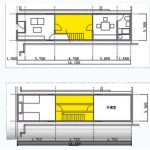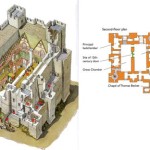Essential Aspects of a Project Management Plan for House Construction
Embarking on the journey of house construction requires meticulous planning and a well-defined Project Management Plan (PMP) serves as the guiding light throughout this endeavor. A comprehensive PMP ensures that all aspects of the project, from inception to completion, are effectively managed, resulting in a successful and timely outcome. Here are some essential components of a robust PMP for house construction:
1. Project Scope and Objectives
Clearly define the project's scope, outlining the desired end result and the specific requirements for the house. This includes detailing the number of bedrooms, bathrooms, square footage, and any special features or amenities. The objectives should align with the client's vision and be SMART (Specific, Measurable, Achievable, Realistic, and Time-bound).
2. Stakeholder Engagement
Identify all key stakeholders involved in the project, including the homeowner, architect, contractor, subcontractors, and any other relevant parties. Establish a communication plan to ensure timely and effective information sharing among all stakeholders. Regular stakeholder meetings help keep everyone informed, address concerns, and maintain project alignment.
3. Schedule and Timeline
Develop a realistic project schedule, outlining the major milestones, tasks, and dependencies. Break down the project into manageable phases, each with its own timeline and deliverables. Use project management software or Gantt charts to visualize the schedule and track progress. Flexibility and contingency plans should be considered to accommodate unforeseen circumstances.
4. Budget Planning
Estimate the total project cost, accounting for all materials, labor, permits, and other expenses. Establish a detailed budget and track actual costs against the plan. Regular budget reviews help identify potential cost overruns and implement corrective measures. A contingency fund should be allocated to manage unexpected expenses.
5. Risk Management
Identify potential risks that could impact the project's timeline, budget, or quality. Develop risk mitigation strategies and contingency plans to address these risks. A risk assessment matrix can be used to prioritize risks based on their likelihood and impact. Regular risk monitoring and communication are crucial for proactive risk management.
6. Quality Control
Establish quality standards and inspection procedures to ensure that the house meets the agreed-upon specifications. Conduct regular inspections throughout the construction process and document the findings. Implement corrective actions promptly to address any quality issues or deviations from the plan. Quality control ensures the durability and value of the end product.
7. Communication Management
Establish clear communication channels and protocols for regular updates, progress reports, and decision-making. Utilize a central communication platform or project management software to facilitate information sharing and document project updates. Timely communication fosters collaboration, manages expectations, and keeps stakeholders informed.
8. Change Management
Recognize that changes are inevitable during construction. Implement a change management process to handle requests for changes, evaluate their impact, and approve or reject them based on project scope and objectives. A formal change management system ensures that changes are managed in a controlled and timely manner.
9. Documentation and Record-keeping
Maintain comprehensive documentation throughout the project lifecycle, including contracts, permits, meeting minutes, inspection reports, and financial records. Organize and store documentation in an accessible and secure manner. Proper documentation serves as evidence of the project's progress and compliance with regulations.
10. Contract Management
Review and negotiate construction contracts to ensure clarity of roles, responsibilities, payment terms, and dispute resolution mechanisms. Monitor contract compliance, manage contract changes, and resolve disputes promptly. Effective contract management ensures that all parties fulfill their obligations and minimizes legal risks.
In conclusion, a well-defined Project Management Plan is the cornerstone of a successful house construction project. By addressing these essential aspects, homeowners and contractors can navigate the complexities of construction effectively, achieve the desired outcome within the planned timeline and budget, and ensure the highest standards of quality.

A Sample Microsoft Project Construction Schedule B4ubuild Com

Construction Schedule Template Free Excel Csv

Project Management For Construction Planning

House Building Project Template Plans Renovation Projects Planning

Project Management For Construction Planning

Home Improvement Blog Construction Project Management Services And Books

Home Renovation Project Plan 10 Examples Format

Project Management House Construction How To Plan Procurement

Work Breakdown Structure Of Construction Project Presentation Graphics Powerpoint Example Slide Templates

Project Management For Construction The Owners Perspective








